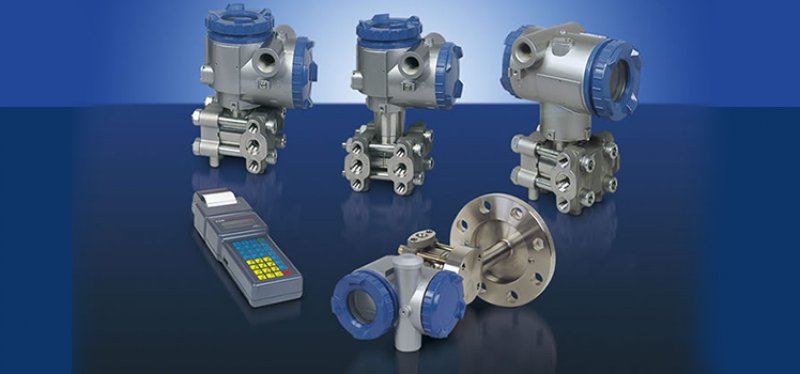
Pressure transmitters are like watchful eyes, ensuring that everything stays in balance and works smoothly in the world of machines and industries. Although they might not be flashy, they are certainly crucial.
A pressure transmitter is a device that detects and responds to changes in pressure, in simple terms. Vital components are found in process industries, particularly in the oil & gas industry, which involves handling various fluids and gases. The pressure transmitter is a mechanical device. It converts the expansion force of a liquid or gas sample into an electrical output. The pressure is converted into an electrical signal by a transducer. Since this is sufficient to help you understand what this pressure-sensing device is, let’s proceed to the pressure transmitter types you should know about.
TYPES OF PRESSURE TRANSMITTER
Absolute Pressure Transmitters:
Absolute pressure transmitters, regardless of air conditions, are useful for detecting pressure relative to a perfect vacuum. To generate a reference to absolute vacuum, the media under measurement is placed in a sealed chamber.
Applications:
Meteorology: Used in weather stations and atmospheric research to gauge air pressure.
Altitude Measurement: Commonly found in aircraft and spacecraft to determine altitude above sea level.
Benefits:
Offers a consistent pressure reference point for accurate measurements.
Gauge Pressure Transmitters:
Pressure is measured relative to atmospheric pressure by gauge pressure transmitters. They function similarly to a tire pressure gauge at a gas station, indicating pressures greater than the surrounding air. Because they include the use of liquids and gases, these sorts of transmitters are commonly utilized in process industries.
Applications:
Industrial Processes: Monitors and controls pressure in manufacturing and processing.
Differential Pressure Transmitters:
Differential pressure transmitters are designed to measure the difference in pressure between two locations. This type is necessary to understand how a system changes or is limited.
This type of pressure transmitter uses two elements to measure the pressure difference. Out of these, the main component is responsible for creating a change in pressure, which is why it’s called the high side. On the other hand, there is another part called the low side that measures the pressure difference created by the main part.
There are several types of primary elements that you can find in a differential pressure transmitter. These include venturi tubes, orifice plates, pitot tubes, flow nozzles, and laminar flow elements. Sensors are like the aides of differential pressure transmitters. They send an electric signal to the housing.
Applications:
Flow Measurement: Used in monitoring the flow of liquids or gases in pipelines.
Level Measurement: Determines the level of liquids in tanks by measuring pressure differences.
Benefits:
Versatility: Applicable in diverse industries for various measurement needs.
Troubleshooting: Helps identify blockages, leaks, or changes in flow within a system.
Capacitive Pressure Transmitters:
Capacitive pressure sensors work by picking up changes in capacitance that happen when pressure levels change. This product’s unique form makes it possible to measure pressure with great accuracy and sensitivity. The capacitance principle is used by the transmitters in question to measure applied pressure correctly.
In the field of electrical engineering, capacitance is a basic way to measure how much an electric charge can stay in two wires.
A capacitive pressure transmitter uses the diaphragm to measure pressure and send the information to the transmitter. It is a vital part that is usually made from high-quality materials like tantalum, stainless steel, or C-Hastelloy. These materials were chosen as they are long-lasting and reliable in a wide range of situations. Being hit by an outside force on the diaphragm’s surface causes it to deform, which changes the distance between two capacitances because of the filled liquid. It is possible to properly measure the change in capacitance and then turn it into a digital signal.
Capacitive pressure transmitters find widespread usage across various industries such as oil and gas, energy, food and beverage, water and environmental, cement, and paper and board.
Applications:
Scientific Research: Utilized in laboratories for precise pressure control.
Semiconductor Manufacturing: Ensures accurate pressure conditions in delicate processes.
Benefits:
High Precision: Offers accurate pressure readings in sensitive applications.
Reduced Sensitivity to Vibrations: Capable of stable performance in vibrating environments.
Multivariable Pressure Transmitters:
Multivariable pressure transmitters offer more than just pressure measurement capabilities. There are extra sensors on these sophisticated devices that let them keep track of multiple factors at once, like temperature and flow.
Because they combine several sensors into one unit, these transmitters offer a complete way to collect important data in commercial settings.
They are a useful tool in a variety of industries due to their capacity to measure numerous parameters concurrently. Numerous companies use these transmitters for various jobs. One of the best things about this option is that it can streamline processes by cutting down on the number of devices that need to be used in the field.
Applications:
Petrochemical Industry: Provides comprehensive data for efficient process control.
HVAC Systems: Optimizes heating, ventilation, and air conditioning processes.
Benefits:
Offers a holistic view of process conditions.
Enables more precise adjustments based on multiple variables.
CONCLUSION
Here you have an overview of the types of pressure transmitters but if you want to know more about these pressure tracking devices, you can consult SS Hussain to guide you on which pressure transmitter would suit your needs. For top-notch Pressure Transmitters, Marshall Town is the preferred choice among customers. Feel free to contact us whenever you’re in need.
